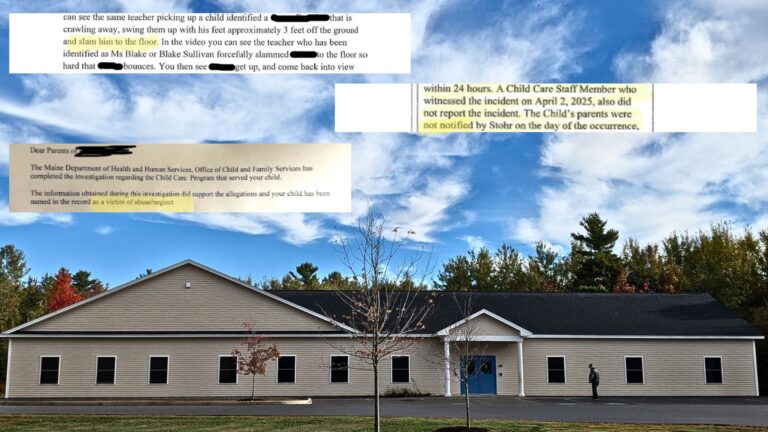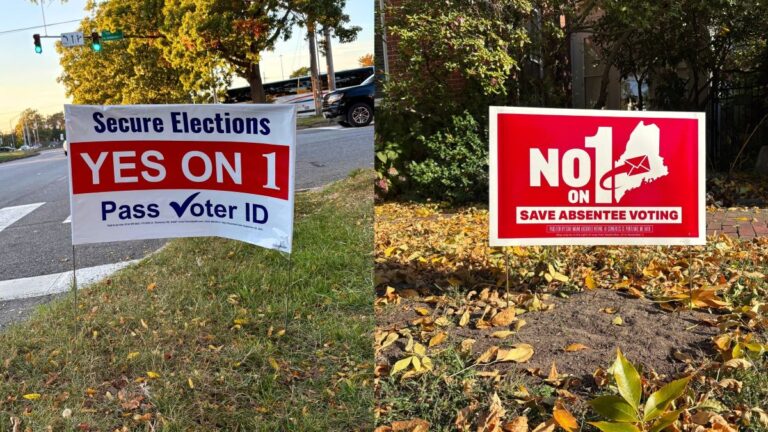For years, environmental stewards trying to slow global warming have sought to limit the amount of carbon in the atmosphere by encouraging the use of what are known as carbon offsets. The idea seems deceptively simple: pay landowners to manage their land in a way that traps carbon, usually by not cutting down trees or planting certain crops, and then force polluters to buy carbon “credits” to counter their emissions.
But in Maine, the timber industry and small woodlot owners have not taken to the programs, another frustrating hurdle on the long path to controlling global warming.
Even though the market has been around for decades, only 3.5% of the state’s large landowners have made deals to sell their carbon.
“It’s kind of a lost opportunity,” said John Hagan, president of Our Climate Common, a group working with the University of Maine to figure out how to get commercial landowners, who account for most of Maine’s timberland owners, to participate in the programs.
Small woodlot owners have also been reluctant to buy in, citing payments too low to justify the costs of complying with rigorous standards.
Last fall, a task force appointed by the governor came up with recommendations on ways to persuade Maine’s 86,000 small landowners — those with between 10 and 10,000 acres — to keep their forests as forests. The state is losing about 10,000 acres of land to development each year, as owners age and entrepreneurs snap up parcels for everything from housing to solar arrays.
The goal of carbon offset programs is to “make a tree worth as much — if not more — up than it is down,” said Tommie Elder, director of Forest Carbon Origination at bluesource, a company that helps landowners navigate the carbon offset marketplace. Trees store more carbon alive than dead, so keeping forests standing is key to lowering the amount of greenhouse gasses contributing to global warming.
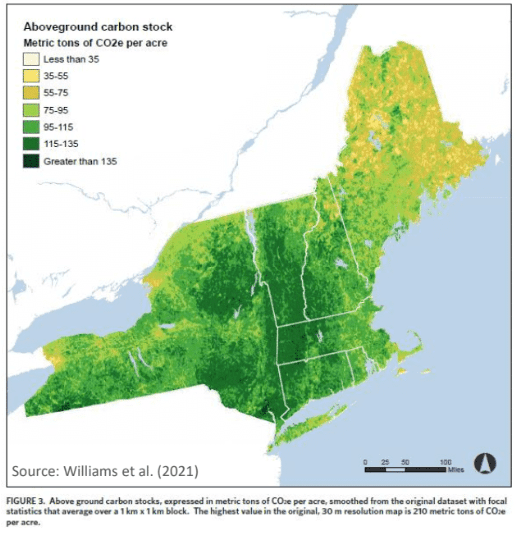
It’s also an essential step in meeting the state’s goal of becoming carbon neutral by 2045, and could provide other benefits, such as reducing habitat fragmentation and increasing biodiversity.
Until recently, it’s been hard to get small landowners to participate in carbon offset programs because the costs to participate haven’t been justified by the payments per acre. Such programs, the argument goes, typically only make sense for large landowners, those with tens of thousands or millions of acres under management.
Except that carbon offset programs don’t seem to make sense for them, either.
Much of the hesitation from commercial woodlot owners comes down to time and money. Programs require landowners to keep forest as forest for decades — some up to a century — which often isn’t attractive to companies that don’t plan on owning the land that long.
Carbon offset programs don’t necessarily mean trees can’t be cut down and sold as lumber — depending on the forest, it may even make sense to cut certain trees and select others that will store more carbon in the long run.
But that type of management is typically more time-consuming and expensive, and may be different from what a landowner has done in the past. Plus, once they’re paid for that carbon, landowners have to count and verify it for however long it’s in the program.
“Landowners know that, so they say between the 100-year requirement and your requiring me to change behavior in some way and document that there’s going to be more carbon, those two things alone just make it not worth it,” said Hagan.
It’s too bad, he added, because “There’s a lot of bang for the buck there. You get one company, all of a sudden you’ve got a million acres to work with. It’s a lot faster than finding 10,000 small woodlot owners who agree on something.”
The California compliance market (so-called because it enrolls companies who are required to offset their emissions) was the first opportunity for Maine landowners who wanted to participate in carbon offset programs, said Dan Hudnut, president of Wagner Forest Management, which has about 2.4 million acres under management in the Northeast, 800,000 of it in Maine, in an email.
That market was attractive for landowners with an above-average number of trees per acre “who didn’t really like to cut wood, and who intended to hold the property long term,” said Hudnut.
But the emergence of that market in 2013 coincided in Maine with an increase in land ownership by investment companies, who often planned to own the land for between 10 to 15 years, far less than the decades-long ownership that had been common among families and even paper mills, who needed a continuous supply.
“I don’t even know if they knew where Maine was,” said Hagan of the investors who came into Maine in the 1990s and early 2000s. “They were just investing in timberland around the world.” They needed annual returns for shareholders and wanted to keep open the possibility of selling the land to developers down the road, rather than locking it up for decades in carbon offset programs.
The more recent emergence of voluntary carbon markets, open to companies that aren’t required to but want to offset their emissions, has attracted more commercial landowners in recent years, said Hudnut. Contracts tend to be shorter-term (40 years) and landowners can be paid for not cutting “as hard as the law allows.”
But Wagner has become more hesitant the more it learns, said Hudnut.
For one, the company is skeptical that entering into a carbon agreement would actually change the amount of carbon stored or sequestered in Maine (or the world) over the next four decades, said Hudnut.
There’s also the problem of demand. The world’s appetite for wood products is increasing, with architects exploring wood as an alternative to emissions-heavy concrete and steel, and as a way to reduce the 40% of global emissions the U.N. estimates come from the construction and building industry.
Annual global cement production alone is thought to account for 8 percent of emissions, according to a report by the think tank Chatham House (compared to 3 percent for the shipping industry). Once it’s standing, operating a building — heating and cooling it, lighting it — can also emit a lot of greenhouse gasses.
Wood presents a potential alternative. “Wood products are a great place to store carbon long term, and have significantly better carbon footprints than steel and concrete,” said Hudnut.
If Maine landowners stop cutting wood, it’s still going to need to come from somewhere (a problem known in the carbon offset industry as “leakage”), possibly from “forests somewhere on the globe that are not as well managed,” said Hudnut, causing the state’s industry and rural communities to suffer. Carbon credit payments only go to landowners, after all, not to people working in the forest or living in towns supported by that labor.
“Until global aggregate demand is magically reduced, we think the Maine forests should be producing and contributing more sustainably grown renewable products to regional and global markets.”
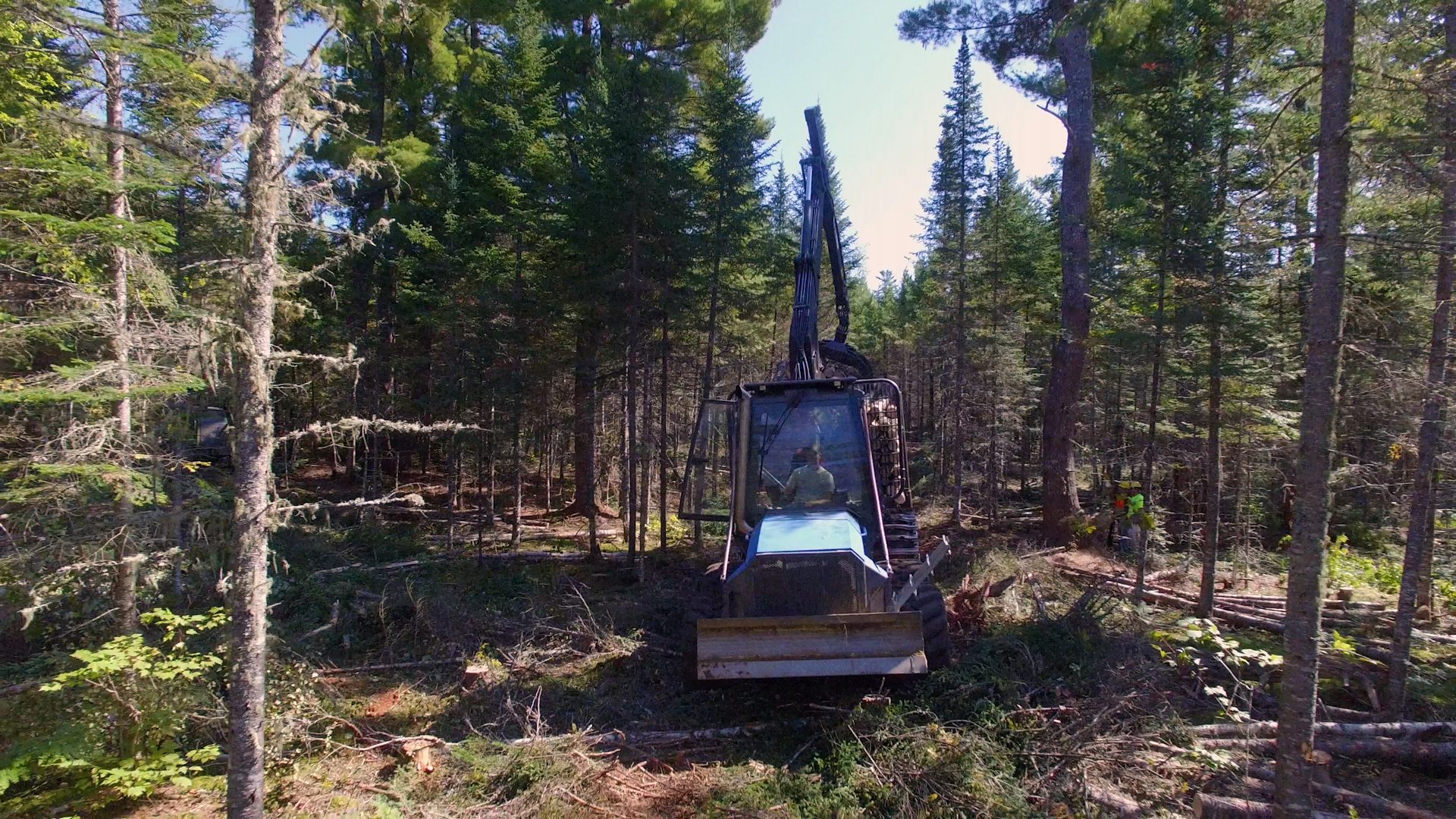
Maine’s commercial timberland owners who are trading cash for carbon, however, say the programs, whatever their flaws, may actually result in healthier, more sustainably managed forests.
“There is a huge incompatibility with good stewardship and capitalism,” said Kyle Burdick, the woodlands manager at Baskahegan Company, which has 88,000 acres under management in eastern Maine, almost all enrolled in carbon offset programs. “This is the first time we’ve ever been financially reimbursed for doing good forestry.”
The nonprofit Nature Conservancy also has carbon offset deals for about 75% of a 160,000-acre parcel along the upper St. John River, which it bought from International Paper 23 years ago.
Getting paid to sequester carbon has resulted in significant management changes that wouldn’t have made financial sense otherwise, said Mark Berry, the Conservancy’s forest program director.
That includes setting aside roughly half the land as an ecological reserve, an area Berry described as a place where “nature is allowed to take its course.” In areas where cutting has continued, harvesting is limited to no more than 15% of the growth each year, allowing TNC to be paid an annual stipend for sequestering more and more carbon.
Some have criticized conservation organizations for participating in carbon offset programs, since their mission is already to conserve forests, not harvest them. The real value, critics argue, lies in saving trees that were in danger of being cut, not those that were going to be preserved regardless.
Berry countered that the money it gets from carbon credit sales has helped TNC purchase other tracts of land for preservation, contributing to the overarching goal of keeping forests as forests.
“Across any type of private owner, there is uncertainty about the future,” said Berry. “Someone may manage the property really well until something changes in their financial circumstances, something changes in their life. They have college tuition to pay, or medical bills, or they lose their job, and then they either suddenly do a timber harvest to get the revenue that they need or they sell the property. Then somebody comes along that may not have a long-term perspective and may not be doing the kind of (forest management) that improves things for the future.”
“Carbon projects are not the goal in and of themselves. They’re just a tool to help accomplish a better outcome for the climate as well as for nature and people more broadly,” he added.
While those decades-long limitations to keep forests standing may be good for the climate, they’re also what make some commercial landowners hesitant to enter into these programs, said Burdick.
“Limiting what you can do with the land in the future is the biggest reason I believe most landowners in Maine don’t participate.”
That may be changing. Elder, of bluesource, said she’s seen more landowners interested in programs as the voluntary marketplace, with its lower time commitments, has expanded and prices per acre have risen. “Probably about two-thirds of the landowners are in the voluntary market,” said Elder. “It’s where we see a lot of potential in Maine and other places.”
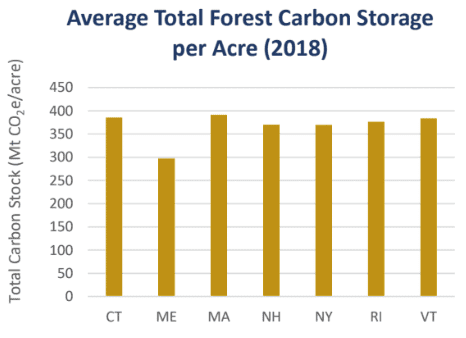
And there’s a lot of room for those landowners to make a difference in carbon storage. Maine’s 17.6 million acres of forest may have higher total carbon storage than any other New England state except New York, but they have significantly lower carbon storage per acre than anywhere else in the region, according to a recent presentation by the Securing Northeast Forest Carbon Program.
Carbon offsets have plenty of critics, many of whom argue that the programs allow polluting companies with high levels of emissions to continue business as usual while also capitalizing on the good PR that comes from saying they’ve reduced their carbon footprint.
There’s also the question of what Maine would do to offset its emissions if there was a sudden increase in landowners, both small and large, participating in the wider carbon offset marketplace, since counting our forests as carbon sinks is one of the ways officials are planning to get the state to net-zero emissions by 2045. If those forests are already being counted as offsets by Google or Delta, do we have to buy them back, or buy credits elsewhere?
Officials have indicated they would subtract those credits from the state’s accounting, said Hagan in an email. Right now that’s problematic, since Maine calculates forest carbon completely differently than how it’s calculated for the marketplace, said Hagan.
State officials say Maine’s forests and forest products are sequestering an amount of carbon equal to 75% of the state’s fossil fuel emissions. But that assertion “will not hold up to scrutiny in the well-developed carbon marketplace,” wrote Hagan and his colleague, Lloyd C. Irland, in a 2020 letter to the Maine Climate Council.
For one, it’s not clear the figure takes into account considerations common in most programs, like leakage (being as sure as possible that if we stop cutting down trees here they’re not being cut down elsewhere), and the idea that for a forest to be legitimately counted as an offset, it shouldn’t be one that was never going to be cut anyway.
The state is also counting carbon that had been claimed by California, said Hagan, and counting carbon it doesn’t own or control, given that 90% of forested land in Maine is in private hands.
“That carbon does not ‘belong’ to the state,” Hagan and Irland wrote. “Unless the state wants to get in the business of controlling what happens to privately owned carbon, we think it is risky at best to include carbon over which the state has no control in an accounting framework.”
Despite all of carbon counting’s “zillion problems,” said Hagan, both he and Berry think carbon markets are a way to reward landowners for practicing sustainable forest management practices and keep forests as forests.
“There may be cases where carbon projects produce a modest climate benefit or less dramatic climate benefit than some would hope,” said Berry. “But if they helped to keep forests on the landscape, they’re still doing some good.”







